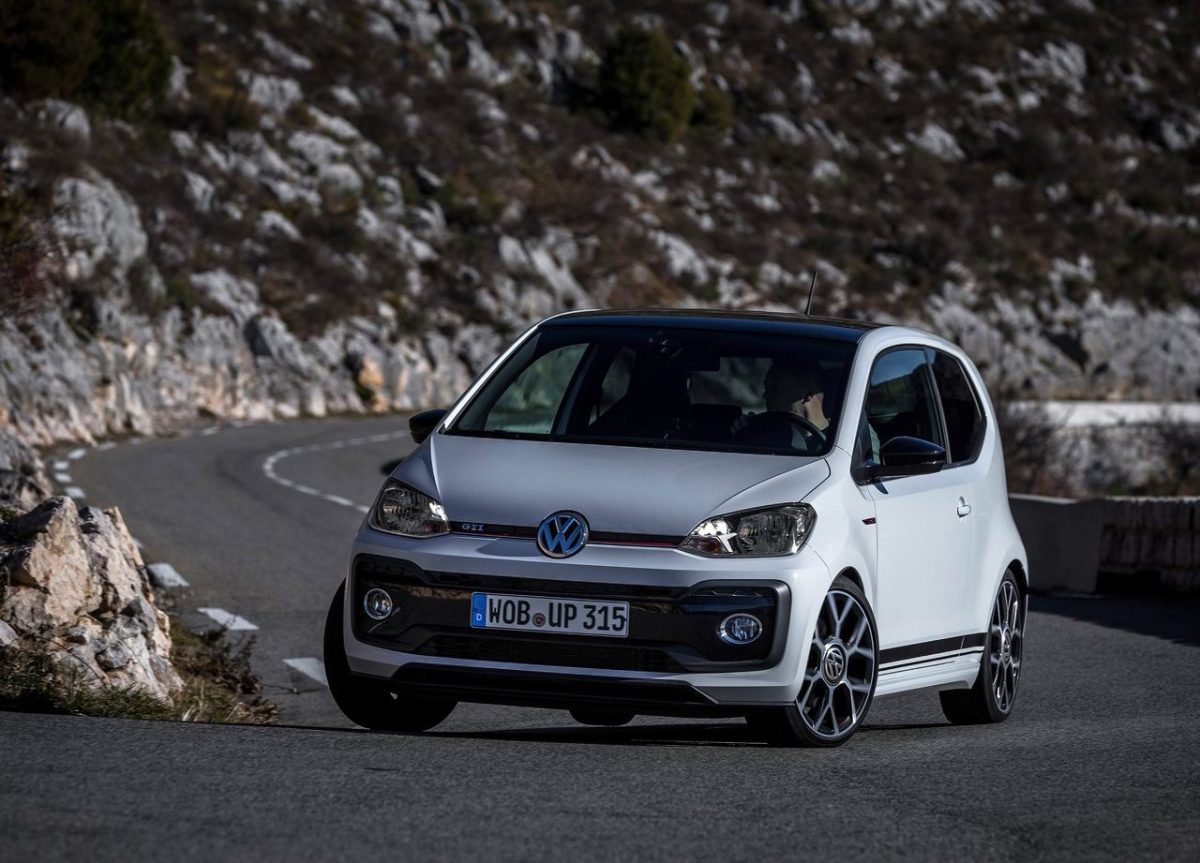It is the small GTI that enables younger drivers to fulfil a dream, and those who are perhaps not-so-young to rekindle old memories: 42 years after the first Golf GTI made its debut, the new Volkswagen up! GTI is here. The concept and power output of the 85 kW / 115 PS up! GTI are broadly in line with the Volkswagen Golf GTI Mk1 unveiled in 1976 with 81 kW / 110 PS. As a compact bundle of power, the new up! GTI pays tribute to this icon – with crisp dimensions, low weight, a powerful and fuel-efficient engine (WLTP consumption: combined 5.7 to 5.6 l/100 km), greater downforce on the rear axle, sports running gear and the typical insignia of a GTI (including red stripes in the radiator grille, red brake callipers and “clark” tartan seat covers). The 196 km/h sports car brings a new dimension in driving fun to the small car class, thus creating a clear link back to the original compact Golf GTI. One typical GTI element is the finely tuned sports running gear. It gives the car the agility of a go-kart, while simultaneously providing a high level of comfort. The GTI is in addition the first up! to come with a petrol particulate filter. With this catalytic converter system the Volkswagen up! GTI fulfils the new European Euro AG emissions standard. However, the most powerful of all up! models remains affordable. As was the case with the Golf GTI Mk1, so too with the new up! GTI: high performance does not mean high prices. In Germany, home of the inventor of the GTI, the product line’s top model is available, for example, for €16,975 – including sports running gear (15 mm lower body), air conditioning, ambient lighting, redesigned 17-inch (“Brands Hatch”) alloy wheels and infotainment system.

The story of the Volkswagen up! GTI began in much the same way as happened in the seventies, when a small team of motorsport enthusiasts developed the first Golf GTI: they bagged themselves the most powerful engine that would fit into the compact car (four-cylinder, 1,588 cc, electric injection, K-Jetronic). And that is what happened this time, too. The crew opted for the 1.0 TSI – a turbocharged direct petrol injection engine, as is used, for example, in the latest Polo and Golf. The three-cylinder TSI with a cubic capacity of 999 cc is a compact and lightweight power train of the EA211 engine family. Its design features include a dual overhead camshaft driven by a toothed timing belt. Both camshafts have been adjusted to reduce the emission and fuel consumption levels and to optimise power output. Details such as a turbocharger with electric wastegate control, an intake manifold module with integrated charge air cooler and an exhaust manifold integrated in the cylinder head ensure that the engine is both powerful and efficient. At a pressure of 350 bar, the fuel mixture is directly injected into the combustion chambers. These features enable the small and lightweight four-cylinder engine to produce its 115 PS peak power output between 5,000 and 5,500 rpm. The direct injection engine’s maximum torque of 200 Nm (range from 2,000 to 3,500 rpm) is sent to the front axle via a 6-speed manual gearbox. By way of comparison: in 1976, the first Golf GTI delivered 140 Nm at 5,000 rpm.

The VW up! GTI is one of the first Volkswagen cars to launch with a close-coupled petrol particulate filter. Its use reduces particulate emissions by up to 95 per cent. After flowing through the turbocharger, the exhaust gas gets fed directly into the particulate filter. Due to its special coating, it works in parallel as a regular catalytic converter. In the first component of the exhaust gas purification system the carbon (“C”) is retained and converted during the regeneration phases into carbon dioxide (“CO2”). In parallel with this, the catalytic converter function reduces three further emission components from the exhaust gas: carbon monoxide (“CO”), nitrogen oxide (“NOx”) and hydrocarbon (“CmHm”). Catalytic reactions turn them likewise into carbon dioxide (“CO2”), and into nitrogen (“N2”) and water (“H2O”). A second three-way catalytic converter ensures adherence to the limits even under high strain. In this way the up! GTI already fulfils the current Euro 6 AG European emissions standard.

The Volkswagen up! GTI is launching with a significantly enhanced set of standard features. In addition to the GTI insignia and the details already outlined, these additional features include the Composition radio system, six loudspeakers, a USB interface (Germany), air conditioning, heated seats, electrically adjustable and heated wing mirrors, front fog lights with static cornering lights and, as described, the sports running gear. The up! GTI is available as standard in “pure white” with two doors (four doors available as an option). Other features available as options include a tilting and sliding panoramic sunroof, “drive pack plus” (which includes City Emergency Braking function, automatic headlight control with Leaving Home and Coming Home function, cruise control system and rain sensor), Rear View (reversing camera), “maps + more dock” (docking interface to the smartphone integration for functions such as navigation and media library) and a 300-watt 8-channel “beats” sound system. Regardless of how a new up! GTI is configured, in the ideal scenario it will perhaps be parked in the garage next to a Golf GTI Mk1 – with the new car for ‘every day’, and the heritage model for journeys through time in the summer.

2018 Volkswagen Up GTI














